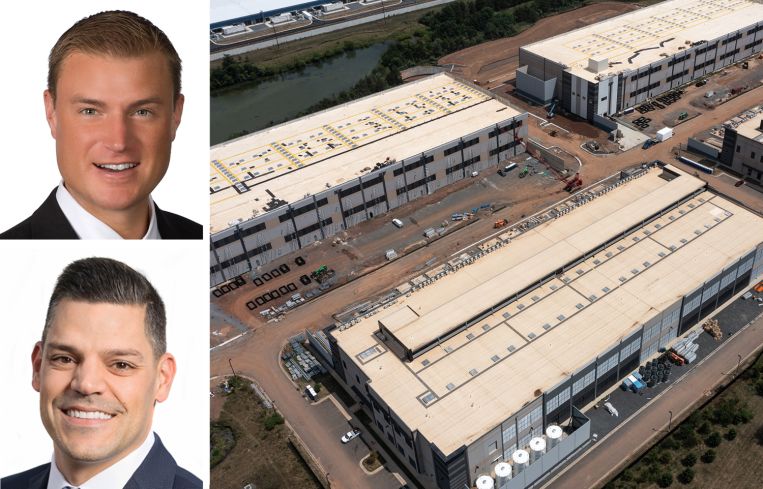North American Data Center Vacancy Hits Record Low of 2.3 Percent
A new report from JLL Capital Markets found among record lows and surging growth, data centers expect $1 trillion in investment over the next five years
By Brian Pascus August 18, 2025 12:21 pm
reprints
America’s data center boom continues unabated in 2025, with record low vacancy rates combining with a construction pipeline that has grown 10 fold in merely five years, opening the space to up to $1 trillion in investment activity by 2030.
A new report from JLL found that colocation vacancy for North American data centers now stands at only 2.3 percent, meaning 97.7 percent of available space is leased, and that of the 6.5 gigawatts [GW] currently under construction, a remarkable 73 percent of that space is already preleased, with most tenants facing wait times of upwards of two years from deal to deployment.
Andrew Batson, head of data center research for the Americas at JLL, told CO that the lack of vacancy and limited availability within the submarket could constrict growth across the sector, impacting not just technology firms, but corporate America as well.
“All companies need some level of data center capacity for storage workloads, but with vacancy near zero it’s restrictive for sure,” he said. “While over the long term it’s helpful for the investor community to have fully leased assets that generate revenue, broadly speaking, it’s unproductive to have vacancy at nearly zero because there’s no capacity for growth.”
By comparison, national data center colocation vacancy stood at 10 percent in 2020 and 5 percent in mid 2022.
The JLL report noted that cloud providers and technology firms are the main demand drivers across the asset class, as these tenants account for two-thirds of all leasing activity.
Absorption is now outpacing supply across the market, with the U.S. market absorbing 2.2 GW of data center space in the first six months of 2025. Today’s national construction pipeline of data centers stands at 7.8 GW, ten times the volume of data center construction in 2020.
Batson told CO that “most markets have doubled, if not tripled, since 2020,” and a handful of smaller markets, such as Columbus, San Antonio, and Austin have increased by even larger amounts.
The market of Northern Virginia outside of Washington, D.C. is the largest in the country, holding 5.6 GW of data center power capacity, and nearly triples the size of the nation’s second largest market, Dallas-Fort Worth, which has 1.5 GW. Other growing markets in the U.S. include Phoenix (1.3 GW), Chicago (1.18 GW) and Atlanta (1.11 GW), according to JLL.
“What we’re seeing across primary markets is nothing short of extraordinary,” said Curt Holcomb, Managing Director with JLL’s global Data Center Solutions practice team.
Investors are taking notice of the construction boom and the favorable supply and demand dynamics.
On the heels of consistent tenant demand, limited supply, soaring rents and a true shift in the American economy to cloud computing and A.I., data center market capitalization has grown 186 percent since 2019, trailing only industrial, which has grown 190 percent. By comparison, office market cap has declined 23 percent in that same time frame.
“The data center sector is growing at a 20 percent compound annual growth rate, CAGR, over the last decade,” said Batson. “Based on demand metrics we see, the preleasing of 73 percent, both supply and demand firmly support our 20 percent CAGR forecast for data centers into 2030 and that gets us to roughly 100GW of added capacity.”
Carl Beardsley, senior managing director of data centers at JLL Capital Markets, noted that long-term leases in the sector are regularly securing 85 percent loan-to-cost from senior lenders at competitive spreads and that asset-backed security (ABS) and single-asset single-borrower (SASB) loan activity has increased for three consecutive years.
The first half of the year saw data centers secure $7.7 billion in ABS deals and $5.7 billion in SASB deals, per JLL.
All told, JLL expects the North American data center pipeline will need to secure $1 trillion in construction loans or permanent financing between 2025 and 2030 to deliver the demand required by market participants.
“There’s significant investor interest in opportunities,” said Batson. “Private equity is playing a role, and on the debt side there’s an increasing lender pool. Previously, data centers were financed by infrastructure banks, but now global banks are looking for exposure to data center opportunities.”
Brian Pascus can be reached at bpascus@commercialobserver.com.


